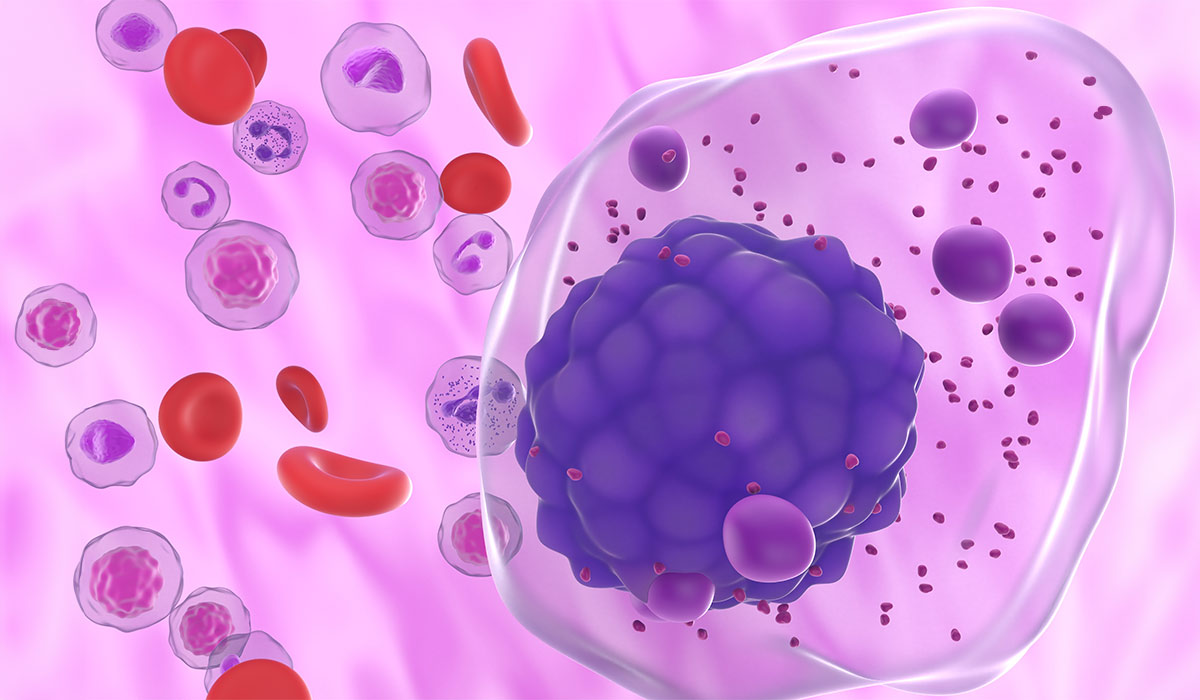Multiple System Atrophy (MSA) is a neurodegenerative disorder that's very uncommon and is exceptionally difficult to treat. The disability of one of the frameworks within the body is the reason for the breakdown of the motor and the autonomic nervous framework. Hence, it produces a double impact that makes treating MSA exceptionally troublesome.
This can be why MSA is frequently misdiagnosed. Its early signs are exceptionally comparable to those of more common infections like Parkinson's or autonomic failure. The illness starts with a common sign, in any case, because it creates a more particular and instructive clinical picture.
Already, MSA was classified into diverse disorders, such as Shy-Drager disorder, which was stamped by autonomic failure, and striatal degeneration, which appeared a part of Parkinsonian signs. These days, we have a much better thought of MSA as a condition with two fundamental sorts:
MSA with overwhelming parkinsonism (MSA-P) and MSA with predominant cerebellar ataxia (MSA-C). The primary one, MSA-P, looks like Parkinson's disease because it causes muscle unbending and trembling, whereas the next one, MSA-C, has adjustment and coordination issues.
Although the broad research has not brought the cause of MSA to light, it is still a puzzle. The main goal of treatment is to control the symptoms; in any case, there's no remedy. The tenacious course of MSA usually leads to serious inability within many years, and most of the patients pass on within a decade of their conclusion.

In no way is MSA an exceedingly unusual occurrence. As it were, 3 to 5 individuals out of 100,000 are influenced by it. That is because malady is uncommon and begins with signs regularly misdiagnosed as those of other infections. As a result, numerous individuals may live for years without knowing they have MSA. Midlife is the usual period for the illness, and the lion's share of cases are within the 50s or 60s. There have been occasions cited within the 30s. Men are somewhat more vulnerable to this than ladies.
The amazing point is that there is a difference in the subtypes of MSA in different regions. For instance, MSA-P is more common in the Western world. MSA-C, on the other hand, is more commonly found in East Asia. The distinction is not in the rate of disease progression or the prognosis; MSA, regardless of its form, has a fast course and ends in a similar, terrible way.
The sickness is often misdiagnosed or not diagnosed until the late stages when it is difficult for healthcare professionals to understand it. That, in turn, causes treatment delays, which makes the already difficult situation for the individuals worse.
What are the etiological components of MSA? In a nutshell, the data we have is constrained. No quality or outstanding natural figure has been distinguished as the most common cause. The current hypothesis implies that MSA could result from a hereditary inclination and natural impacts, like in other neurodegenerative infections. Be that as it may, there are no conclusive reasons for this.
Conversely, MSA is epitomized by the abnormal build-up of the alpha-synuclein protein. This protein is involved in the etiology of Parkinson's disease, and as such, it shapes totals within the brain's glial cells. These cells deliver the myelin sheath, which may be a defensive coating around the neurons, and the amassing of this protein causes them to begin passing on. The result is an increasing speed of neurodegeneration.
The basal ganglia, cerebellum, and brainstem are brain districts that reveal more pulverization. These regions are the centers of engine coordination and autonomic control; hence, they are the most destinations where MSA impacts adjustment, development, and critical bladder control. The reason behind the sign of this protein combination is still a secret, and analysts are investigating it.
The appearance of MSA is advanced and may be inconceivably serious. They may be partitioned into three fundamental bunches:
Autonomic dysfunction, parkinsonism, and cerebellar brokenness. The introduction of these side effects may change depending on the sort of MSA that the persistent has, MSA-P or MSA-C; in any case, autonomic complications will continuously show up at a few stages.
Autonomic brokenness is the term that portrays the non-ordinary functioning of the autonomic components that control capacities such as blood weight, heart rate, absorption, and pee bladder control. As a rule, MSA patients experience orthostatic hypotension, which is when the blood pressure drops quickly while standing, causing discombobulation or, indeed, the misfortune of awareness. Other autonomic indications are pee incontinence, sexual brokenness, and impeded thermoregulation.
The overwhelming stage in MSA-P![]() is the Parkinsonian stage. It incorporates indications such as solid inflexibility, bradykinesia, and postural flimsiness. These side effects are exceptionally comparable to those of Parkinson's infection, but patients with MSA generally have a destitute reaction to treatment with Parkinson's drugs, such as l******a.
is the Parkinsonian stage. It incorporates indications such as solid inflexibility, bradykinesia, and postural flimsiness. These side effects are exceptionally comparable to those of Parkinson's infection, but patients with MSA generally have a destitute reaction to treatment with Parkinson's drugs, such as l******a.
MSA-C, in contrast, is associated with cerebellar symptoms. These involve coordination problems and ataxia, which is a kind of unsteady gait, clumsiness, and issues with fine motor skills. Speech may not be clear, slurring may be prominent, and the regulation of eye movements may become hard.
However, over the progression, the symptoms remain. Finally, walking and performing simple self-care activities can be impossible. Swallowing difficulties are usual and can lead to choking or aspiration pneumonia.

MSA, in its entirety, has a broad range of consequences, which may, in some cases, be very dangerous and even life-threatening. Aspiration pneumonia is a frequent consequence resulting from a condition like ingesting food or liquids into the lungs. Concerning pneumonia, it is the last blow that usually comes to those with MSA.
Besides the other serious problem, orthostatic hypotension, patients also experience regular fainting episodes followed by falls. Generally, more often than not, fractures are the main cause of such injuries. Strokes or cardiac arrest also start from repeated intervals in blood pressure.
One of the most frequent MSA symptoms is bladder problems, which usually follow a urinary tract infection. Untreated, these infections might expand and lead to even more serious problems.
Moreover, the respiratory issue is the other factor causing a lot of worries. Central sleep apnea and obstructive sleep apnea are common sleep apneas that are often associated with the sleep vampire effect on the cardiovascular system and cause fatigue.
Similar to MSA, depression as well as anxiety also accompany it, and they are quite common in both situations. Therefore, they add to the already high psychological stress of the illness. Above all, the people's wave of hopelessness is due to the loss of freedom and the connected inevitable decay.
MSA conclusion is challenging, particularly when the side effects are confounded with those of other illnesses. A clear conclusion can, however, be made after passing with the assistance of a brain tissue examination that appears alpha-synuclein stores. In life, clinicians utilize clinical evaluations, imaging testing, and symptom examination to set up a conclusion.
Clinical examination is the primary strategy specialists utilize in diagnosing MSA; at that point, they continue with a few tests. A nitty gritty therapeutic history will be taken, and a neurological examination will be done to discover any autonomic brokenness issues at the side of engine anomalies. One vital contrast between MSA and other clutters, including Parkinson's, is the way the patients react to l******a treatment. By and large, individuals with Parkinson's malady appear to have exceptionally fast enhancements generally before long after treatment starts. MSA patients get essentially no advantage from it.
The MRI, or attractive reverberation imaging filter, is one of the foremost common demonstrative devices. For those who have MSA, it appears that the brain's structure has changed in numerous ways. For occurrence, the basal ganglia, which are parts of the basal ganglia, have the putamen, one of the zones that will recoil significantly in MSA-P. In addition, the misfortune of the cerebellum is one of the indications of MSA-C. One case is the “hot cross bun” sign on MRI, found at the pons and common in MSA-C.
Positron Emission Tomography![]() (PET) and Single-Photon Emission Computed Tomography (SPECT) are other strategies for evaluating brain functioning. The patient's brain is in a moo activity state during these tests, which affirms the conclusion of MSA.
(PET) and Single-Photon Emission Computed Tomography (SPECT) are other strategies for evaluating brain functioning. The patient's brain is in a moo activity state during these tests, which affirms the conclusion of MSA.
The primary reason why specialists carry out autonomic tests is to check on the off chance that the autonomic nervous framework is working regularly, as autonomic disappointment is a vital characteristic of MSA. The tilt-table test is among them. It assesses the way the blood weight of the body changes when a person changes position. An understanding of MSA ordinarily encompasses an exceptionally quick drop in blood weight when he moves from sitting to standing.
Others will check things like sweating, heart rate changeability, and how well the stomach and intestine frameworks work. These tests will give you more data about the illness.

MSA is incurable, and therefore, the main goal of treatment is to distract the mind and enhance the quality of life. Neurologists, cardiologists, urologists, and physical therapists are some of the experts who are often involved in treating this disease, which affects multiple body systems.
L******a is a drug used to treat Parkinson's disease and relieve Parkinson's symptoms. On the one hand, MSA patients do not have a good reaction to this medication, while those with Parkinson's disease have a good response to it. Dopamine agonists can be used, but they are not as effective in treating MSA.
Midodrine and fludrocortisone are drugs commonly given to people for the treatment of bothersome autonomic symptoms that are not really serious. They are beneficial in maintaining blood pressure stable during rapid drops that make one feel dizzy or pass out.
The most common MSA treatments are Physical, occupational, and other therapies. Therapy is effective in improving mobility, strength, and balance. People with dysphagia or aphasia may also benefit from speech therapy. As their disease progresses, people start to use walkers or wheelchairs.
Nutrition should always be the first step in preventing choking. In extreme cases, such as when the patient has difficulty swallowing, the feeding tube may be able to avoid aspiration.
Surgical treatment is the only option for bladder dysfunction when botulinum toxin injections are administered or if urine flow is rerouted. Deep brain stimulation![]() (DBS) is commonly used for Parkinson's disease, but its effectiveness in multiple sclerosis (MSA) is very low. Thus, it is rarely used.
(DBS) is commonly used for Parkinson's disease, but its effectiveness in multiple sclerosis (MSA) is very low. Thus, it is rarely used.
MSA patients undergo a lot of pain. Most people can lead a normal life within six to ten years of being diagnosed. The main causes of death in the US are aspiration pneumonia, infections, and sudden cardiac events.
Nevertheless, no therapy can cure or relieve the disease at this time. The treatments available now are focused on relieving symptoms and improving quality of life in the long run.
It is not yet known how to prevent multiple system atrophy from developing. This is because the specific causes are not clear, making it difficult to determine preventive measures. Studies are currently underway, and a better understanding of the genetic makeup and environmental factors could lead to the development of such strategies.
In today's world, early diagnosis and treatment of disease have become the most important factors in managing it and reducing its most serious symptoms.
Table of Contents

Dysautonomia is a disorder disrupting one or more functions of the autonomic nervous system (ANS). If ANS are affected, the… read more »

Multiple sclerosis is a progressive disease of the nervous system that can lead to disability. Learn how to recognize the… read more »

Neuropathy is a disease that influences nerves. Learn what are the symptoms and causes of neuropathy. Check out how it… read more »

Serotonin syndrome (SS) is a drug-induced syndrome that is dangerous. This condition can occur after starting a serotonergic drug. Find… read more »

Postural Orthostatic Tachycardia Syndrome is a characteristic of dysautonomia, which has diverse meanings for several diseases that affect the autonomic… read more »

Neuropathy is a disease of the peripheral nerves. Discover what are the most common neuropathy symptoms and ow to deal… read more »

Nerve damage, also known as neuropathy, could be a condition that influences the body's nervous framework. The nervous framework is a… read more »

Multiple myeloma is a type of bone marrow and blood cancer. Its main symptoms are bone pain, kidney problems, anemia,… read more »

Parkinson's disease is progressive and takes years to develop. It most often affects seniors, but the first symptoms can be… read more »